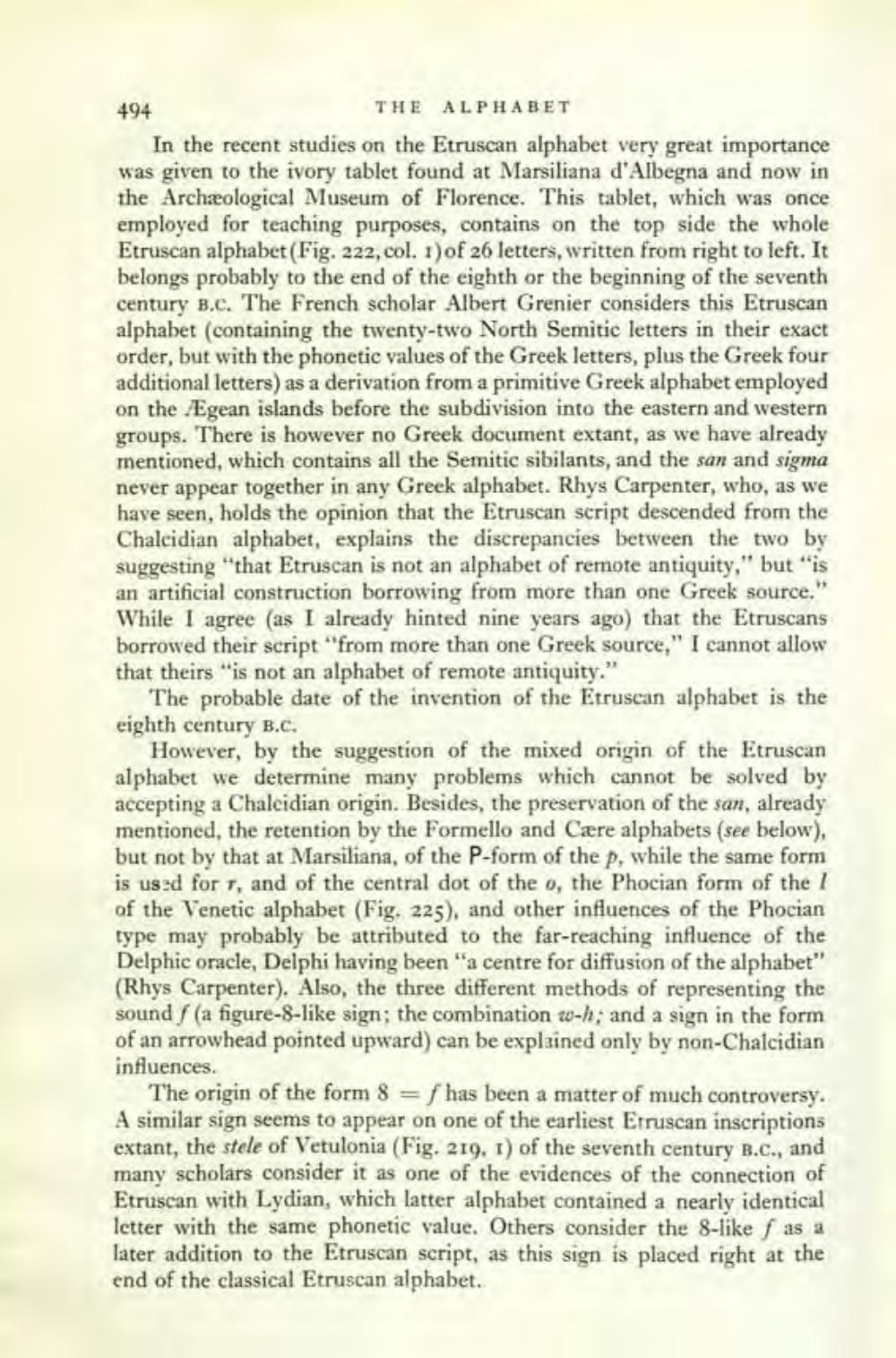________________
494
THE ALPHABET In the recent studies on the Etruscan alphabet very great importance was given to the ivory tablet found at Marsiliana d'Albegna and now in the Archäological Museum of Florence. This tablet, which was once employed for teaching purposes, contains on the top side the whole Etruscan alphabet (Fig. 222, col. 1)of 26 letters, written from right to left. It belongs probably to the end of the eighth or the beginning of the seventh century B.c. The French scholar Albert Grenier considers this Etruscan alphabet (containing the twenty-two North Semitic letters in their exact order, but with the phonetic values of the Greek letters, plus the Greek four additional letters) as a derivation from a primitive Greek alphabet employed on the Egean islands before the subdivision into the eastern and western groups. There is however no Greek document extant, as we have already mentioned, which contains all the Semitic sibilants, and the san and sigma never appear together in any Greek alphabet. Rhys Carpenter, who, as we have seen, holds the opinion that the Etruscan script descended from the Chalcidian alphabet, explains the discrepancies between the two by suggesting that Etruscan is not an alphabet of remote antiquity," but is an artificial construction borrowing from more than one Greek source." While I agree (as I already hinted nine years ago) that the Etruscans borrowed their script "from more than one Greek source," I cannot allow that theirs "is not an alphabet of remote antiquity."
The probable date of the invention of the Etruscan alphaber is the eighth century B.C.
However, by the suggestion of the mixed origin of the Etruscan alphabet we determine many problems which cannot be solved by accepting a Chalcidian origin. Besides, the preservation of the san, already mentioned, the retention by the Formello and Care alphabets (see below). but not by that at Marsiliana, of the P-form of the p, while the same form is used for T, and of the central dot of the o, the Phocian form of the 1 of the Venetic alphabet (Fig. 225), and other influences of the Phocian type may probably be attributed to the far-reaching influence of the Delphic oracle, Delphi having been "a centre for diffusion of the alphabet" (Rhys Carpenter). Also, the three different methods of representing the sound / (a figure-8-like sign; the combination co-h; and a sign in the form of an arrowhead pointed upward) can be explained only by non-Chalcidian influences.
The origin of the form 8 = f has been a matter of much controversy. A similar sign seems to appear on one of the earliest Etruscan inscriptions extant, the stele of Vetulonia (Fig. 219. 1) of the seventh century B.C., and many scholars consider it as one of the evidences of the connection of Etruscan with Lydian, which latter alphabet contained a nearly identical letter with the same phonetic value. Others consider the 8-like f as a later addition to the Etruscan script, as this sign is placed right at the end of the classical Etruscan alphabet.




